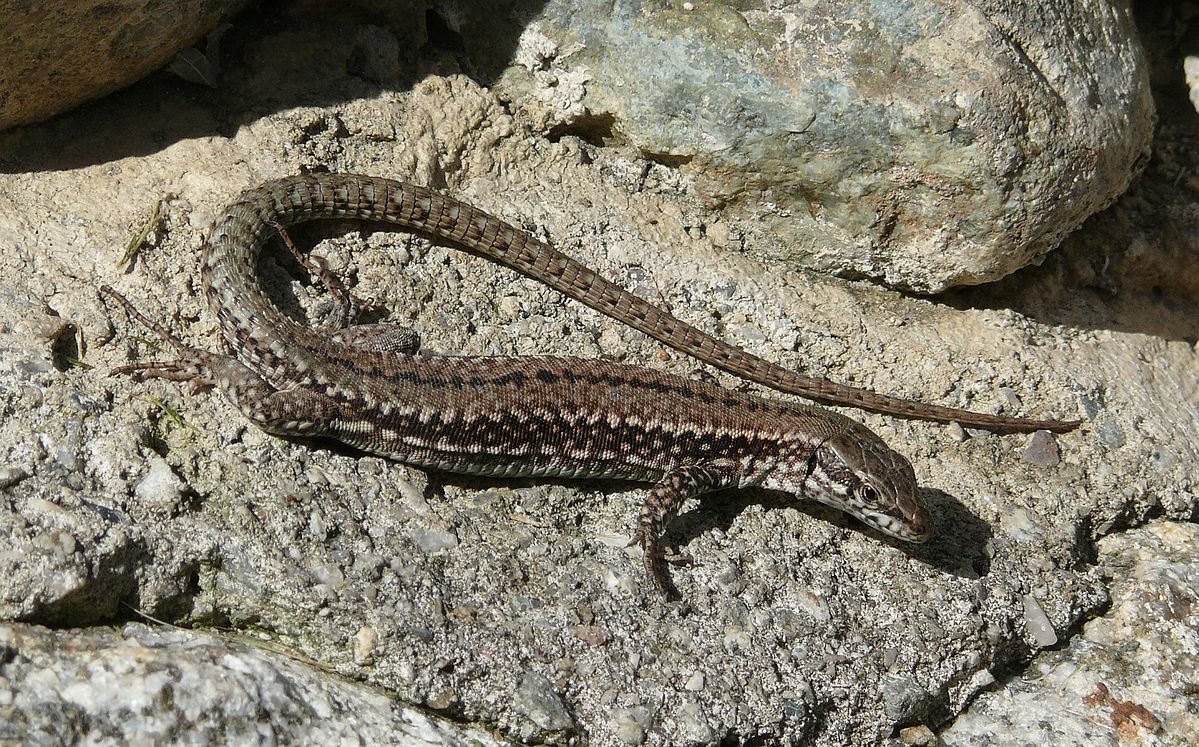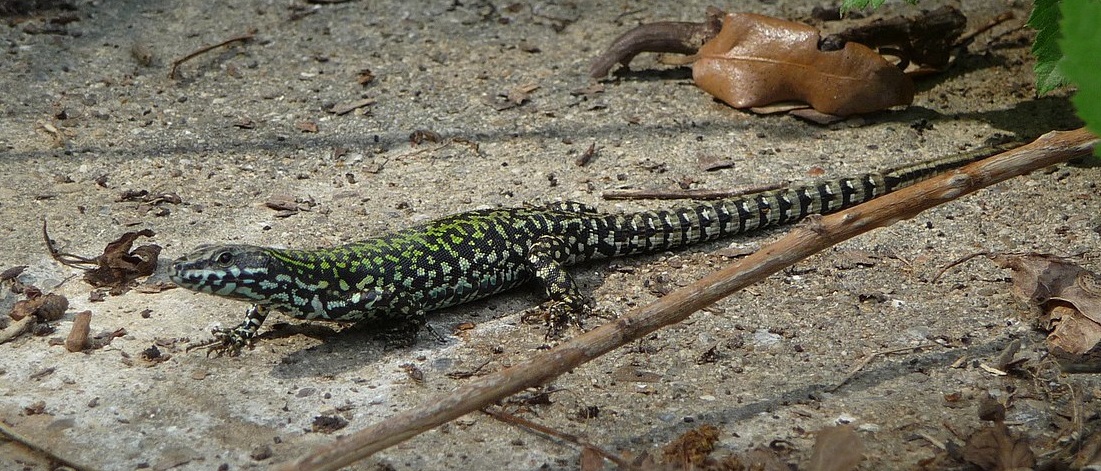Common Wall Lizard

Common Wall Lizard
(Podarcis muralis )
Tags: Terrestrial
Identification and Reproduction
Identification:
- The common wall lizard is also known as the European wall lizard, they have a long, slender flattened body.
- They can grow up to 63 mm long, without measuring the tail.
- Tail can reach a length 1.5 times the body length.
- They have long finger and toes.
- Range in colour and pattern; brown, grey to green.
- May have black-blue spots which can be splotchy or form linear pattern along the side.
- Juvenile wall lizards will appear coppery brown with black blotches.
- Adults may also have green flecks on their back, concentrated near their shoulders.
- Scales across the back and sides are bead-like.
Reproduction:
- They are oviparous (egg-laying) and will deposit 3-11 eggs at once.
- May lay once or twice during a year, depending on the length of summer.
- Eggs are laid beneath the ground or under a piece of bark or rock.
- Females have been known to nest communally, and may be reused each year.
- On Saanich up to 65 eggs were observed together in a nest.
- Eggs will incubate for 9-11 weeks. On Vancouver Island hatchlings have been observed as early as late July.
Habitat & Ecology
- In BC, these lizards are ground-dwelling, typically found on rock faces, open woodlands, and close to areas of human development that are exposed to the sun.
- They are fast moving and good climbers, sometimes found on the side of trees, fences and buildings.
- To avoid cold winters they will hiberate below the frost for long periods of time, extending up to several months.
- Their range continues to expand with the aid of farm vehicles, hay bales, plant pots and other accidental dispersal.
- The common wall lizards were introduced to Saanich on Vancouver Island when a small private zoo closed and released them.
- Currently, in BC they are well-established on Vancouver Island but recently they have been found in North Vancouver and Osoyoos.
Impacts
- These wall lizards gather in large populations and can negatively impact native species and ecosystems.
- They may impact native species' populations by consuming excessive amounts of small invertebreates.
- They also compete for food and shelter with BC's native reptiles: Northern alligator lizard (Elgaria coerulea) and the endangered sharp-tailed snake (Contia tenuis).
Management
- Report any European wall lizard sightings to the BC Inter-Ministry Invasive Species Working Group here,
- Refrain from owning, breeding, and distributing live European wall lizards.
- Do not catch wild lizards and attempt to keep as pets.
- If you have a pet lizard that you no longer want - Please do not release into our natural environment.
Resources
Download the BC Invasive Species Alert for European Wall Lizards here.
Download the Habitat Acquisition Trust's European Wall Lizard Alert here.
Refer to The Reptiles of British Columbia's factpage on European Wall Lizard here.
Header photo (Nino Barbieri).




